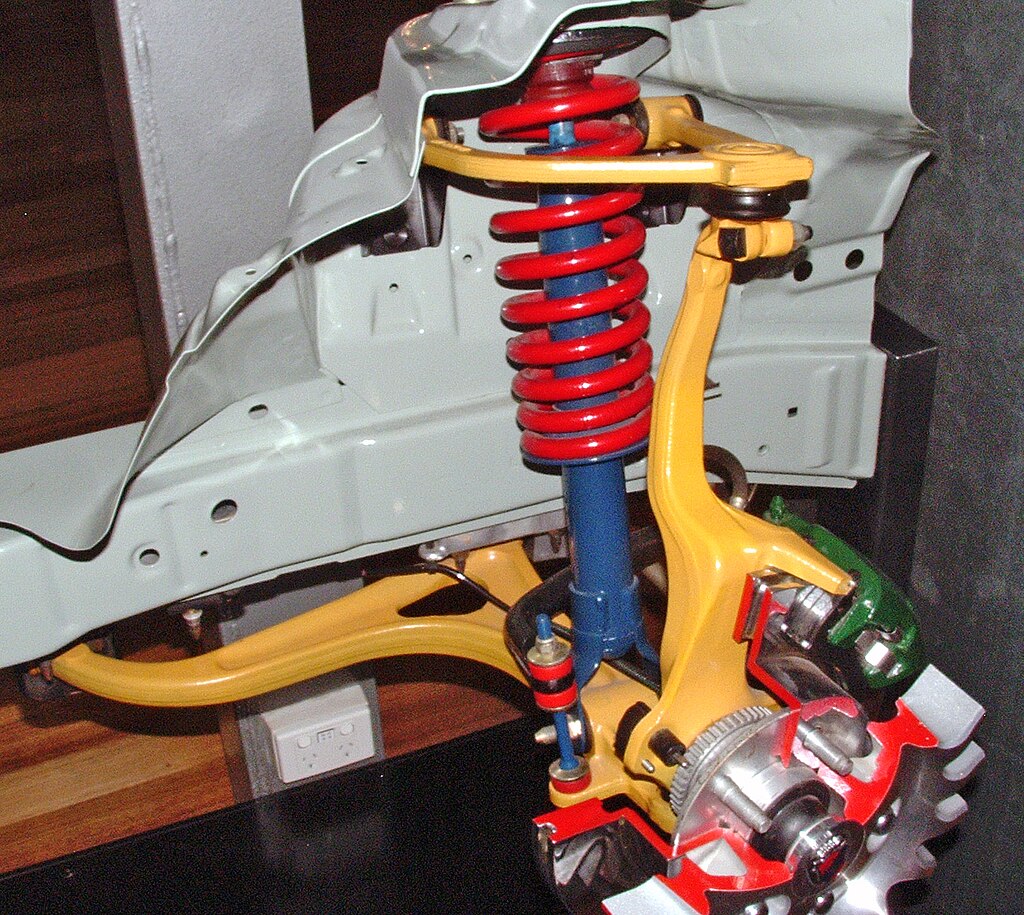Front Wheel Independent Suspension and its types
Front Wheel Independent Suspension: These kind of Suspension are place at front tyres. They are called independent because each wheel of the same axle move vertically up and down when they face bump or dig in the road ,both wheel move suspension work independently
There are 5 types of Independent Suspension system that are used in the front axle :
- Parallel Link/ Wishbone type
- Vertical Guide
- Swinging half - axle
- Mac Pherson strut tyre
- Trailing Link
1.Wishbone/Parallel Link Supension:
It is called Wishbone due to its wishbone shape . The Wishbone type Suspension is most popular in automobile.
The Wishbone Suspension (double wishbone suspension design) contain two arms upper and lower pivoted to the chassis of the vehicle and a spring/shock absorber is placed in the wishbone mechanism in such a way that it can control the verticle movement of it. If you notice carefully you can see upper arm is shorter than lower arm this helps to keep wheel track constant and avoid tyre scrub
Advantage :
- Easy to work
- Provide negative camber gain to full jounce travel
- Wheel motion can be optimized
- Easy to work under different load conditions
Disadvantage :
- Complex in Design
- Expensive
- Longer service time
- Heavier than MacPherson design
2. Vertical Guide Suspension :
Vertical guide Suspension contains following part upper spacing rod , king pin , coil spring , cross member and steering knuckle
In this king pin is directly attached to the cross member and it will go up and down when i face bump .In this wheel attitude ,wheel base and track remain unchanged But they have decreasing stability with time so very few cars use this suspension
3.Swinging Half axle suspension :
Advantages:
- Reduced unsprung weight since the differential is mounted to the chassis
- It eliminates symathetic camber changes on opposite wheels
Disavantage :
- During bumpy road when wheel goes up and down it cause change in camber angle vary
- It produce jacking effect during cornering which results positive camber angle on the outside wheel which is more loaded and thus loss in traction
4.Mac Pherson Suspension System
It contains a wishbone lower arm that is connected to the telescopic damper (spring and shock absorber)
- MacPherson strut suspension is lighter as compare to Doubble Wishbone suspension.
- Simpler design as compare to double wishbone
- Camber angle does not change when wheel moves up and down
- More space for the engine department
Disadvantage :
- Less freedom to choose roll center
- This suspension cannot be used cockpit adjustable height cars because of its inability to change camber angle
- Greater torque steer required
5. Trailing Link :
Trailing Link sometimes also called trailing arm suspension. In this case it is itself attached to the shaft carrying the wheel. When the wheel moves up and down it winds and unwinds the spring sometime torsion bar also used in this design
Advantage :
- Maintain camber angle
- wheel track is constant
Disadvantage:
- Distance between the front wheel and rear wheel change
- Very difficult to solve the 1st point because of that it is used in limited car
- Take large space








0 Comments
if you are not getting it then ask i am glad to help